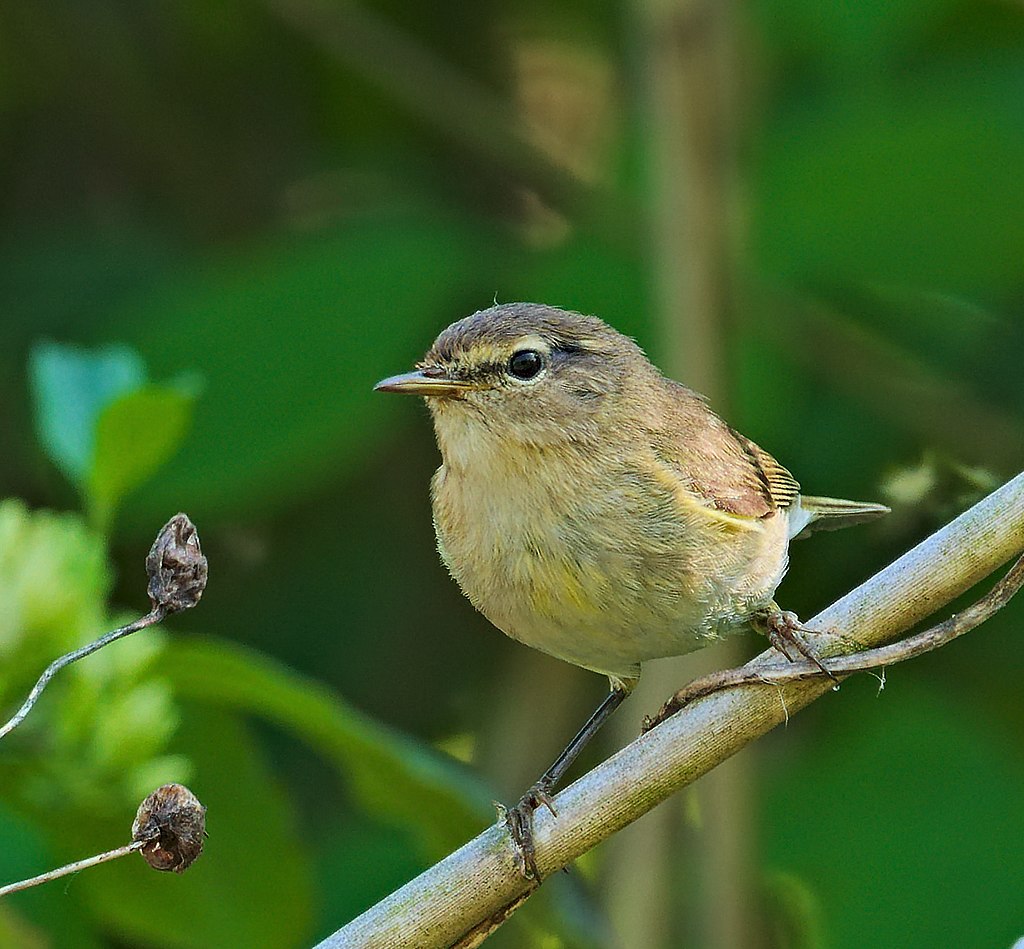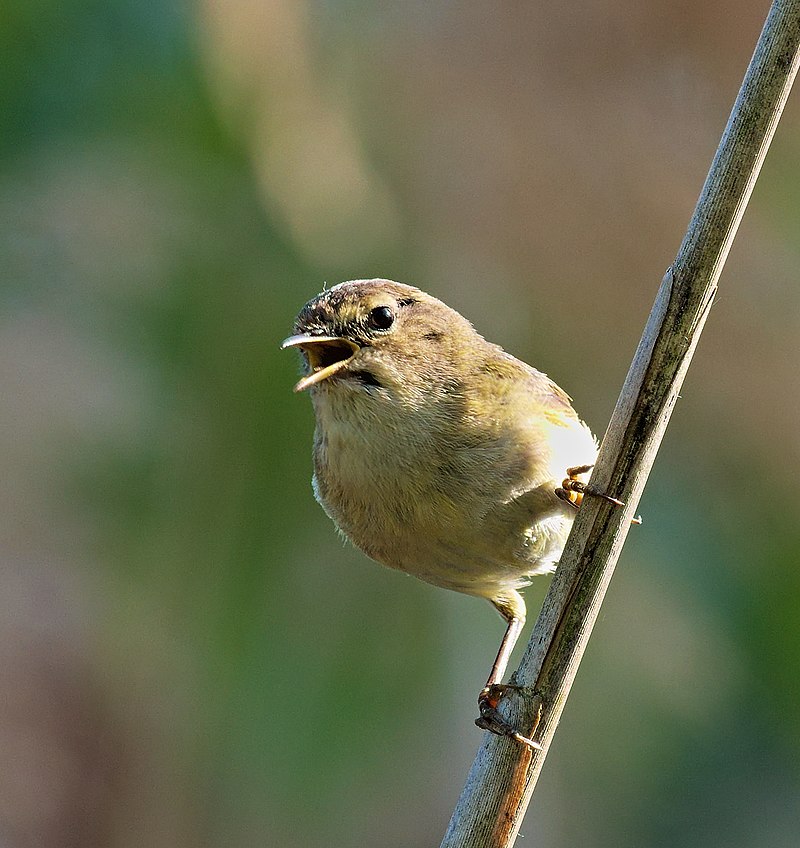Garden Wildlife
Garden Wildlife


Nelson Conceição, XC702295. Accessible at www.xeno-canto.org/702295.
Dominique Guillerme, XC701963. Accessible at www.xeno-canto.org/701963.
What do they eat?
Chiffchaffs are insectivorous during the summer breeding period but will take fruit and berries in the winter. They don’t normally come to garden feeders.
Where do they breed?
Chiffchaffs arrive here in early March and produce two broods of up to 6 eggs between April and July. They nest close to the ground in dense vegetation like brambles.
What do they do?
British and Irish chiffchaffs are summer visitors that return to the Mediterranean and North Africa in the winter. Some are now overwintering here, but unlike the blackcap, not because of garden feeders, instead this is probably a consequence of climate change and milder winters.
How are they doing?
Their population has increased markedly since 1980, and they now are thought to have about 1.8 million summer territories. They are found throughout Britain and Ireland, but are most common in central and southern England and Wales.
Finding out more:
BTO profile on chiffchaff
RSPB profile on chiffchaff
Page written and compiled by Steve Head
Chiffchaff Phylloscopus collybita
Less commonly seen than the blackcap, this summer-visiting warbler is only recorded in 4% of gardens. They are broadleaf woodland, scrub and reed-bed birds, and most often seen in gardens in the autumn.


What do they look like?
They are small (10cm) birds, about the size of a wren, and not very distinctive, with a dull olive-brown back and buff underparts – the original “little brown bird”, although they do have quite a fetching pale eye-stripe. They are most readily identified from their song.
What do they sound like?
The song is a distinctive and eponymous “chiff-chaff, chiff-chaff”, and they have a short “fweep” call.
Song chiff-chaffing Call
What do they eat?
Chiffchaffs are insectivorous during the summer breeding period but will take fruit and berries in the winter. They don’t normally come to garden feeders.
Where do they breed?
Chiffchaffs arrive here in early March and produce two broods of up to 6 eggs between April and July. They nest close to the ground in dense vegetation like brambles.
What do they do?
British and Irish chiffchaffs are summer visitors that return to the Mediterranean and North Africa in the winter. Some are now overwintering here, but unlike the blackcap, not because of garden feeders, instead this is probably a consequence of climate change and milder winters.
How are they doing?
Their population has increased markedly since 1980, and they now are thought to have about 1.8 million summer territories. They are found throughout Britain and Ireland, but are most common in central and southern England and Wales.
Finding out more:
Page written and compiled by Steve Head
What do they look like?
They are small (10cm) birds, about the size of a wren, and not very distinctive, with a dull olive-brown back and buff underparts – the original “little brown bird”, although they do have quite a fetching pale eye-stripe. They are most readily identified from their song.
What do they sound like?
The song is a distinctive and eponymous “chiff-chaff, chiff-chaff”, and they have a short “fweep” call.
Song chiff-chaffing Call


Chiffchaff Phylloscopus collybita
Less commonly seen than the blackcap, this summer-visiting warbler is only recorded in 4% of gardens. They are broadleaf woodland, scrub and reed-bed birds, and most often seen in gardens in the autumn.
























